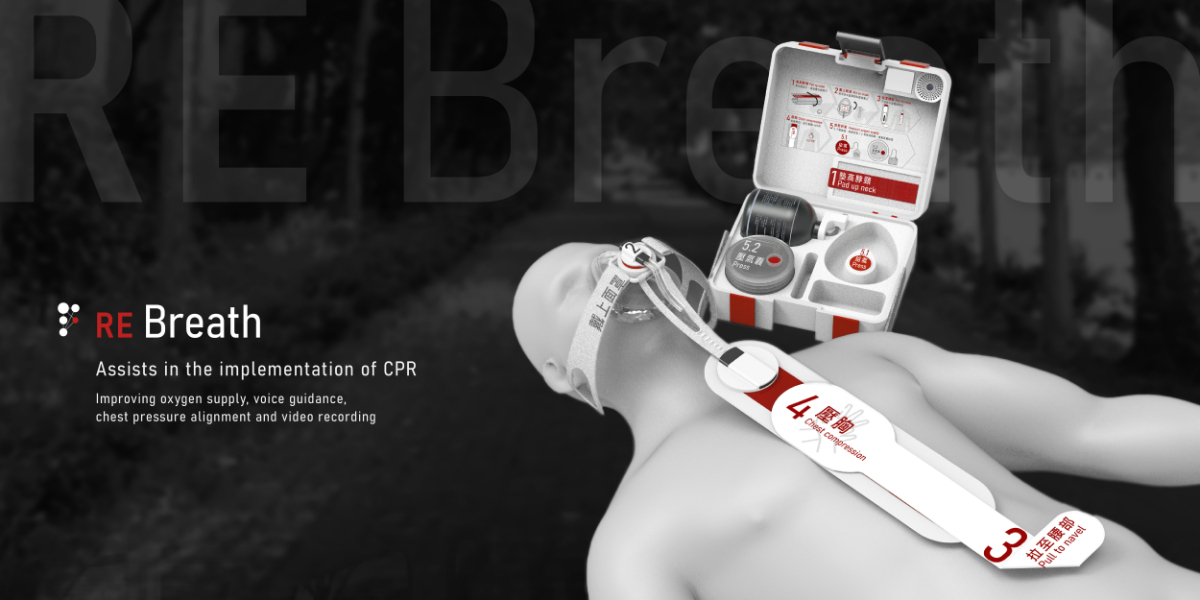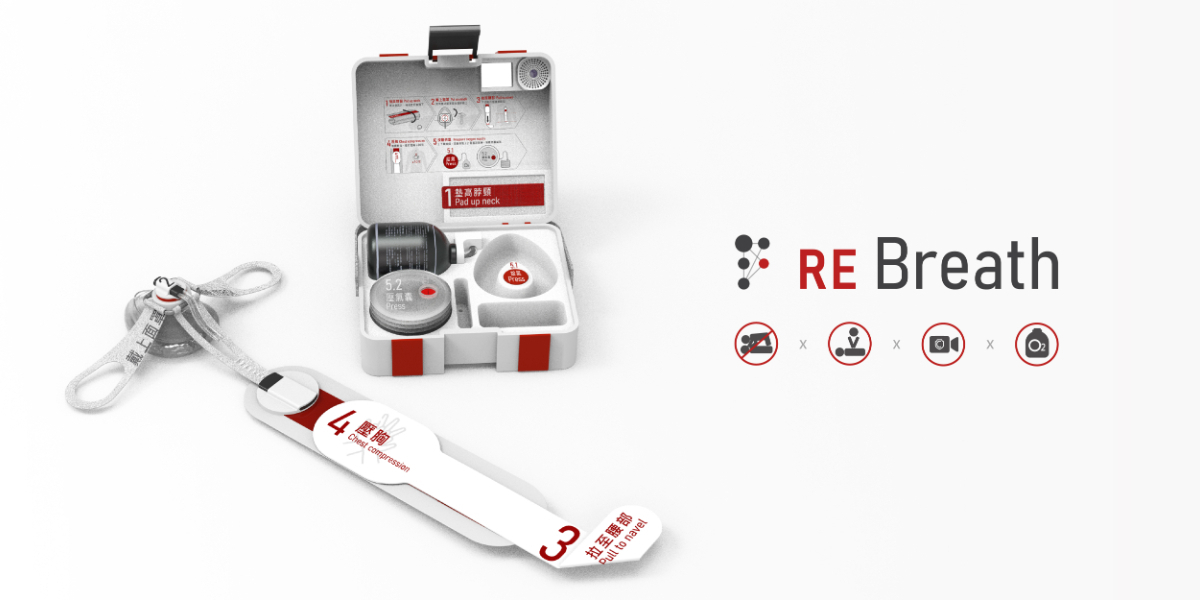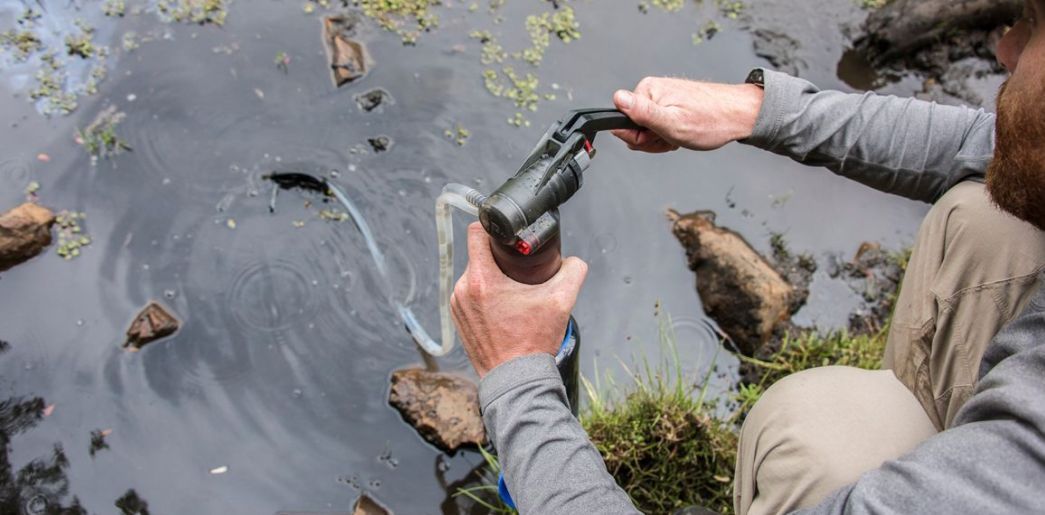AWARD YEAR
2023
CATEGORY
Body
GOALS
Good Health & Well-being, Quality Education, Sustainable Cities & Communities, Generational Harmony
KEYWORDS
Non-Contact Artificial Respiration, Cardiac Arrest (OHCA), High Quality Oxygen Supply, Video Recording, CPR
COUNTRY
Taiwan
DESIGNED BY
Chou Yueh-Ju, Chien Yu-Chieh, Chang Yen, Sun Yu-Chieh, Prof. Li Kai-Chu
WEBSITE
https://amandinechou0216.wixsite.com/applechou/project-01
RE Breath-Assists in the implementation of CPR
CPR device for improving oxygen supply, voice guidance, chest pressure alignment and video recording
How does it work?
OPERATIVE PROCEDURES
1. Take out pad and curl under the neck.
2. Put on the mask.
3. Pull the patch to align waist.
4. Chest compression 30 times.
5. Press to supply oxygen from cylinder or airbag.
MATERIAL
Mask/Contraposition patch/Airbag - Medical silicone
Barostat joints/Oxygen cylinder - Medical stainless steel
Case - 100% PC + crash lining
SERVICE MODEL
1. Place
•Transportation
With high human traffic, occur during trips.
•Park/Playground
Prone to heart problems from strenuous activity.
•Long-term care
Easy to temporary urgent rescue operations.
•Lifeguard
In an accident, to provide timely first aid.
•Apartment/Building
With a high percentage of the population.
2. Using mode
•Major activity- Ambulance station- Taken with
•Apartment/Enterprise- Management room- Against wall placement
•Transportation- Station/compartment- Bbeside AED
3. Product function
•No mouth to mouth
•Assist alignment in chest compression.
•Video record guarantee
•Increase oxygen supply concentration.
Why is it needed?
BACKGROUND
1. The unexpected occurrence cannot be predicted, but it can still be found from multiple cases, such as the timely implementation of CPR first aid by paralogues, which can increase the chance of resuscitation and save the patient back.
2. Research indicates that CPR immediately after 4-6 minutes of stopping breathing has more than 15-20% chance of resuscitation.
3. According to the survey results, 88.3% said they had insufficient confidence in rescue. Nearly 40% are afraid of mouth-to-mouth artificial respiration for fear of infection.
QUESTIONNAIRE
Q:The most difficult when operating CPR ?
•Artificial respiration 58%
•Chest compression 56.5%
Q:In CPR process, the most concern ?
•Improper operation 77.4%
•Legal liability 67.7%
PROBLEMS AND ISSUES
1. Have health concerns and dare not breathe artificially
2. Forgetting CPR steps over time
3. Subsequent legal disputes, responsibility attribution
How does it improve life?
DESIGN MISSION
Patients who received standard cardiopulmonary resuscitation were twice as likely to survive.
•For those who cannot be shocked according to the judgment of AED
CPR must be continued until the rescue personnel arrive.
•For the person who can be shocked according to the AED
After the electric shock, continue to give CPR.
CPR is permeabilize the artificial pressure chest to allow the brain to obtain a temporary 30-40% blood supply, so continuous uninterrupted CPR, is the key to saving patients
•The study said that immediate CPR increase the survival chance by one to two times.
•Standard CPR (including artificial breathing) increase 38.1%
•The chance of pressure chest rescue alone is reduced 5-10%
IMPACT
•SDGs 3.4
RE Breath simplifies the steps and equipment, helps to overcome the sanitary and operational problems, and improves the public's willingness to implement CPR, so as to obtain a higher survival rate.







